THE ČEŠKA KOČA HUT - Index
- THE ČEŠKA KOČA HUT
- OPENING OF THE HUT
- 1900–1918
- PERIOD AFTER THE FIRST WORLD WAR
- JERNEJ KRČ, ANDREJ KARNIČAR AND HUTKEEPERS
- AFTER THE SECOND WORLD WAR
- CARGO CABLEWAYS
- 1990–2010
- 2015–2025
- 2021–2026 – EXTENSIVE RENOVATIONS
THE ČEŠKA KOČA HUT
The Češka koča was built by the Czech Section of the Slovenian Alpine Club in Prague in 1900. The Czech Section of the Slovenian Alpine Club was established on 24 June 1897 in Prague. A year later, its members proposed the construction of a hut in the Slovenian Alps. Negotiations about the construction took place with the leadership of the then Slovenian Alpine Club (Alpine Association of Slovenia today) on 13 August 1898 at the Triglavski dom hut on Kredarica and it was decided to build the hut in the Kamnik Alps, beneath the north faces of Grintovec. The land for the hut was provided by the municipality of Jezersko.
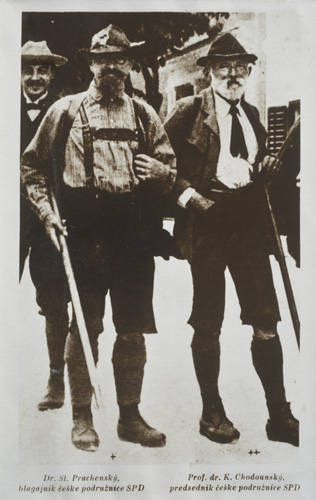
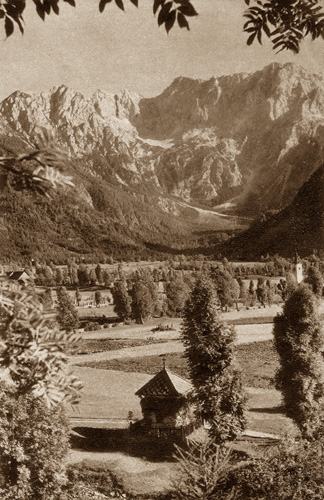
Construction of the hut, built in the style of a typical Czech cottage with a shingle roof, began in June 1899. The hut was designed by Czech architect Josef Podhájský, who was himself a member of the Czech Section of the Slovenian Alpine Club in Prague. The construction was completed at the beginning of the summer season in 1900. The total cost of construction amounted to 24,000 korunas, which was a considerable sum at the time.
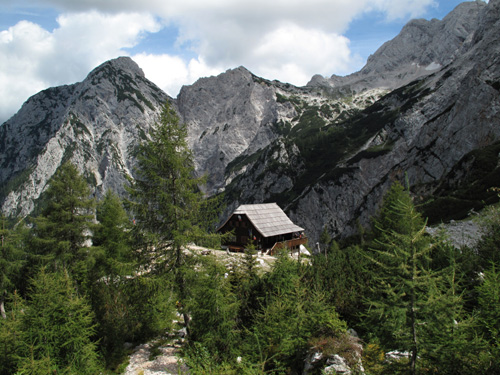

OPENING OF THE HUT
The ceremonial opening of the hut took place at 10:00 a.m. on Thursday, 26 July 1900.
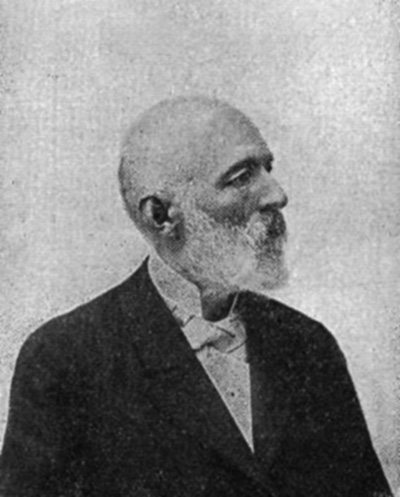

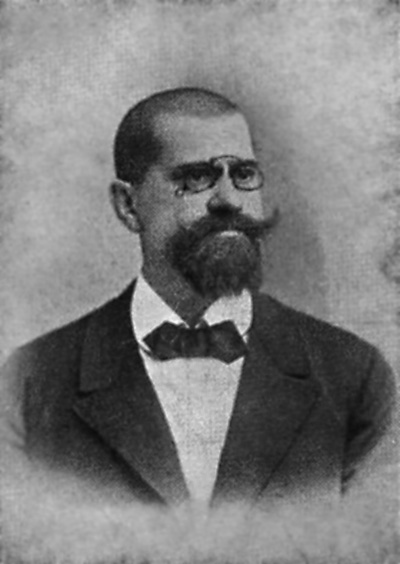
Around 250 visitors gathered in the area around the hut at Spodnje Ravni beneath the north face of Grintovec. The opening of the hut became a major Czech-Slovenian event, attended by many official and honorary guests.
More than 70 Czech guests attended, including a representative of the City of Prague, Dr Jeřábek, and the entire leadership of the Czech Section of the Slovenian Alpine Club, headed by Professor K. Chodounský, St. Práchenský, B. Franta and L. Mareš. From the Slovenian side, attendees included the mayor of Ljubljana I. Hribar, Slovenian Alpine Club chairman Fran Tominšek, Triglav parish priest Jakob Aljaž from Dovje, Professor Fran Orožen, representative of Jezersko municipality Mr Makek, regional MP Mr Muri, chairmen of Slovenian Alpine Club sections, and many locals from Jezersko. After Professor K. Chodounský’s opening speech, the hut was consecrated by priest Jakob Aljaž.
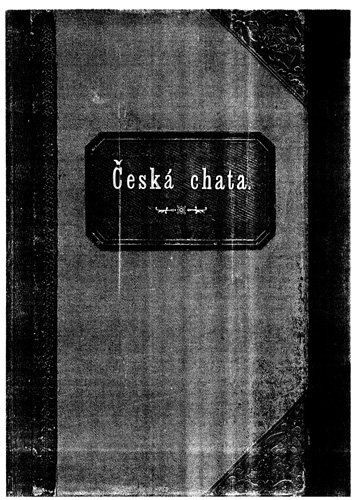
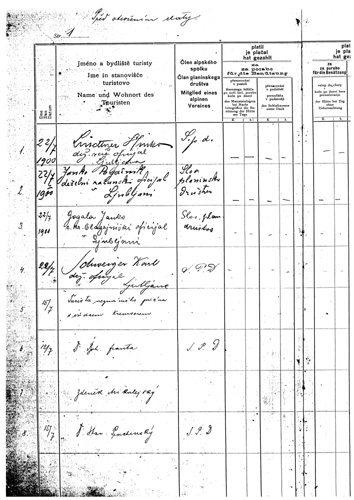
1900–1918
When the hut opened, it offered nine beds for guests on the ground floor.
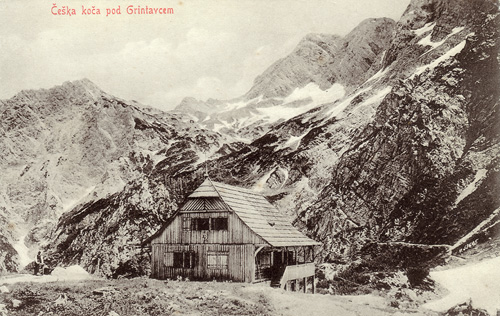

During this period, Češka koča was abandoned and closed.
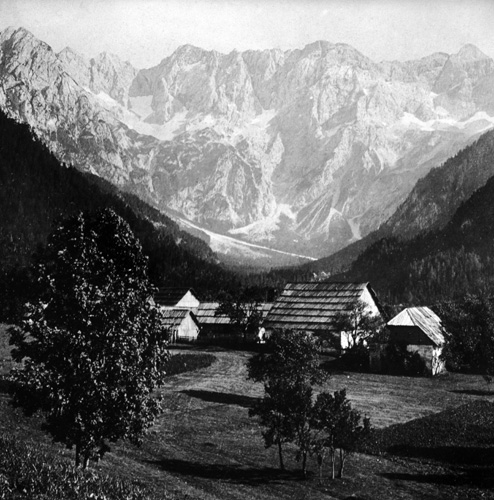

PERIOD AFTER THE FIRST WORLD WAR
After the end of the First World War, the Czech Section of the Slovenian Alpine Club ceased its activities in the newly formed Czechoslovakia. Ownership of Češka koča was transferred to the Czech Section of the Slovenian Alpine Club. Initially, the hut was managed by Kranj and later by Jezersko clubs.


The return to alpinism during this post-war period was difficult and slow. After four years of closure, the hut was in a desolate condition. Before the arrival of the first post-war visitors, many repairs had to be carried out. The first hutkeeper to return after the war was Jernej Krč. Gradually, the first post-war visitors began to return, mostly local tourists and mountaineers. Larger investments and repairs were carried out only in the 1930s. During this period, the roof was repaired, and a new path called the Lower or Starčev Path was built from the Štularjeva planina pasture to the hut. During the Second World War, the hut was once again closed and abandoned.
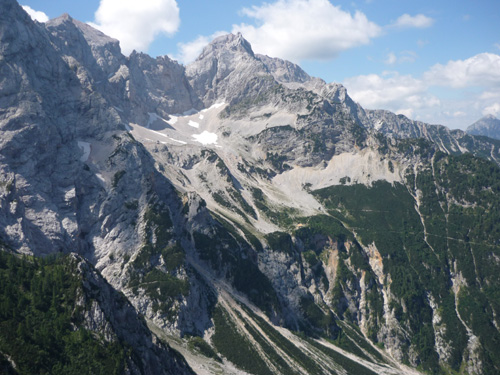
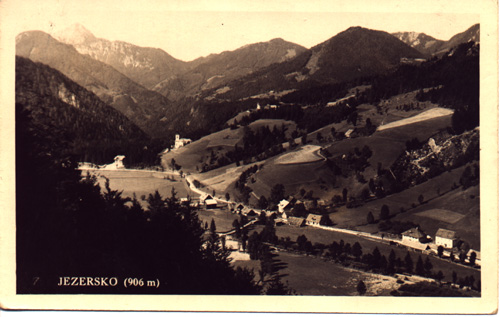
JERNEJ KRČ, ANDREJ KARNIČAR AND HUTKEEPERS
Several hutkeepers dedicated their lives to Češka koča, each leaving their personal mark.

The longest-serving hutkeepers became legends, just like the hut itself. The first keeper was mountain guide Jernej Krč (1871–1925), who took care of the hut for the first twenty years.
In addition to this, he was actively involved in developing the entire Jezersko area.
Andrej Karničar (1923–1998) became a legend of the second half of the 20th century. He managed Češka koča together with his wife Anica for almost forty years. During his tenure, most improvements and repairs were carried out (construction of water mains, basement facilities, toilets, rooms, dormitories, and cargo cableway).
As an outstanding expert on the life and traditions of the entire Jezersko area, he published two books in the late years of his life: Chronicle of Jezersko Municipality and Legends of Jezersko.
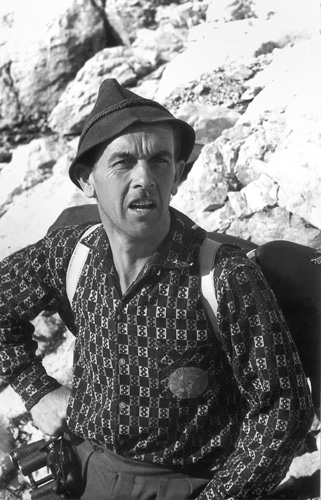
| Hutkeepers of Češka koča: | ||
| 1900–1920 | Jernej Krč | Jezersko |
| 1921–1923 | Minka Krč | Kokra |
| 1924–1926 | Janes Poušnar | Kokra |
| 1927–1929 | Minka Krč | Kokra |
| 1930–1941 | Anton Starc | Ribnica |
| 1947–1948 | Tepina Ludvik | Jezersko |
| 1949–1950 | Andrej Karničar | Jezersko |
| 1950–1955 | Ančka Šenk | Jezersko |
| 1956 | Cilka Slapar | Jezersko |
| 1957 | Franc Zadnikar | Jezersko |
| 1958–1959 | Filip Podjed | Jezersko |
| 1960–1973 | Andrej Karničar | Jezersko |
| 1974 | Izidor Karničar | Jezersko |
| 1975–1996 | Andrej Karničar | Jezersko |
| 1997–2001 | Drejc Karničar | Jezersko |
| 2002 | Irma Karničar Šenk | Jezersko |
| 2003 | Karmen Karničar and Tone Karničar | Jezersko |
| 2004–2014 | Tone Karničar | Jezersko |
| 2015 | Karmen Karničar | Jezersko |
AFTER THE SECOND WORLD WAR
During the Second World War, Češka koča was closed. It was occasionally used by small partisan units, which was why the occupant forces wanted to burn it down. Thanks to the efforts of several influential locals, this never happened. In 1949, ownership of the hut was transferred to the newly established Jezersko Alpine Club, which took over from the Kranj Alpine Club. This allowed the next phase of restoration to begin, which held great importance for local mountaineers and the entire Jezersko.
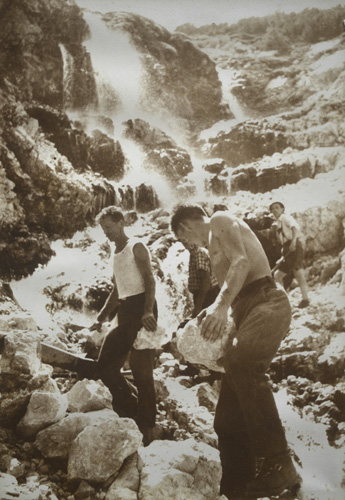
| Major works and investments since Jezersko Alpine Club became the owner: | |
| 1954 | construction of a water supply system from the Zgornje Ravni basin |
| 1958 | expansion of accommodation with bunk beds and shared dormitories |
| 1969 | construction of the first cargo cableway |
| 1970 | construction of a basement, winter room, and two storage rooms |
| 1971 | four new rooms, toilets, washroom, shower, balcony, and terrace |
| 1972 | bar counter, another dining room, new kitchen |
| 1973 | installation of electrical wiring (generator-powered) |
| 1974 | water reservoir (3,000 litres) |
| 1977 | a large avalanche damaged the hut, destroying the south-side balcony and kitchen |
| 1985 | construction of the second cargo cableway |
| 1989 | replacement of roof, 4,800 new shingles installed |
| 1994 | new catchment reservoir and 500-metre water supply pipeline |
| 1997 | small hydroelectric plant |
| 2003 | new kitchen |
| 2010 | replacement of roof covering |
| 2014 | third improvement of the cableway |

CARGO CABLEWAYS
From the opening of the hut until the late 1960s, supplies were carried exclusively by porters. In the last decade before the construction of the cableway, each porter had to make multiple trips per day. The growing number of visitors made it necessary to build a cargo cableway. The construction of the first cableway across steep slopes was a major event at the time. All work was carried out by locals. The highly dangerous and demanding project was completed on 26 July 1969, when the first load was transported to the hut. In 1985, a decision was made to build a new cargo cableway with a drive motor in the valley.
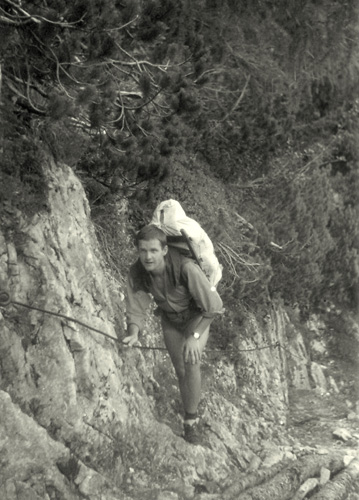
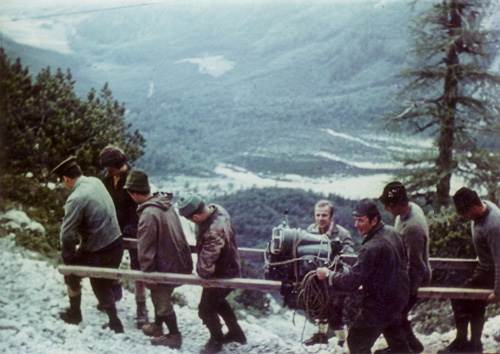
A large-scale reconstruction of the second cableway took place between 2013 and 2015, effectively creating what can be considered the third cableway.
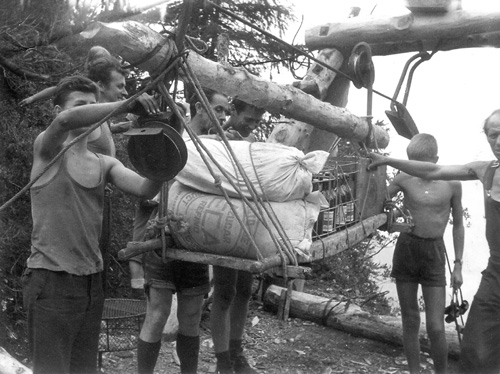
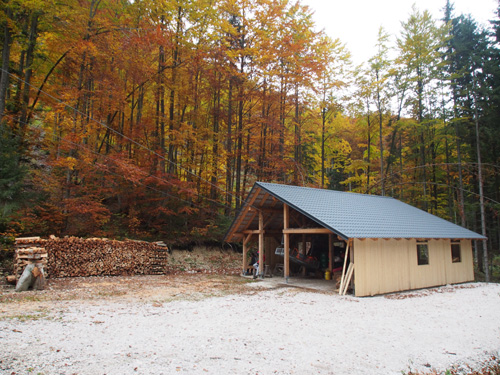
1990–2010
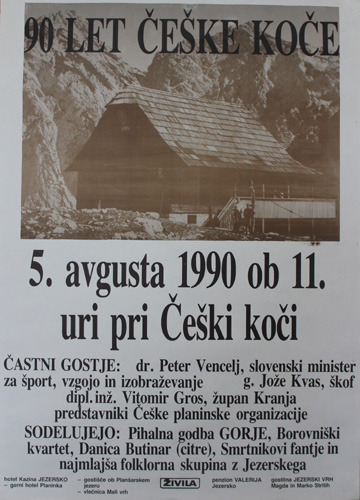

By the late 1980s, the number of mountaineers visiting the Kamnik and Savinja Alps was steadily increasing, and visitors from Czechoslovakia also began to return. In 1988, a Cooperation Agreement was signed in Ljubljana between the Alpine Association of Slovenia and the Hiking Association of the Czechoslovak Sports Union. The celebrations of the 90th anniversary of the hut were particularly memorable. The Jezersko Alpine Club, under the leadership of Luka Karničar, organised a real mountaineering festival. On Sunday 5 August 1990, a record 2,500 visitors gathered around Češka koča in beautiful weather. Their participation symbolised the exceptional atmosphere of a period marked by Slovenia’s emerging independence, the opening of Czechoslovakia’s borders, and the fall of the Berlin Wall. The 100th and 110th anniversaries of the hut’s construction were also celebrated in the same friendly spirit at Spodnje Ravni. In 2000, a Lime Tree of Czech-Slovenian Friendship was planted in the centre of Jezersko.
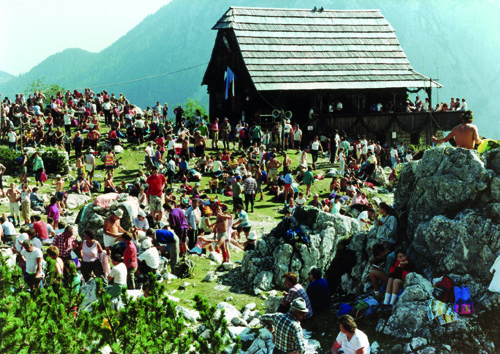

2015–2025
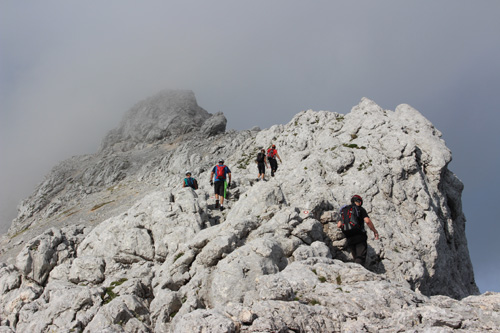

In 2014, a unique joint project entitled “Češka koča” and “Mountaineering and Czech-Slovenian Relations”, was announced and scheduled for completion in 2026–2027. In 2015, the 115th anniversary of the hut was celebrated. The festivities began in Jezersko on Thursday, 23 July 2015 with the opening of the Czech-Slovenian Friendship Park in the town centre. On Saturday 25 July, around 350 mountain enthusiasts gathered near the hut, including about 80 from the Czech Republic. From 20–22 November 2015, an exhibition on the hut’s history was first presented in Prague during the International Festival of Alpinism. The joint concert of the Jezersko Choir and a brass ensemble from Mittersill, Austria, held in St Wenceslas Church in Prague on Thursday 22 November 2018, was a memorable event. This musical performance was part of the Slovenian presentation at IFA PRAGUE 2018. Between 2018 and 2022, the Czech Section of the Alpine Association of Slovenia provided full-season work assistance at the hut. Each year, 10 to 12 pairs of volunteers from various parts of the Czech Republic participated in the “Helping at the Češka koča Hut” programme from June to September.
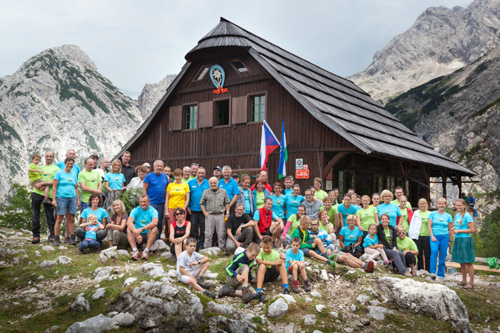
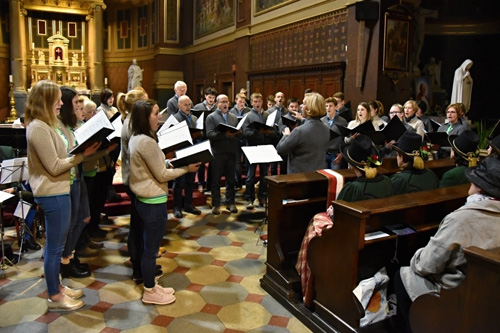
2021–2026 – EXTENSIVE RENOVATIONS
Between 2019 and 2021, a public fundraising campaign was held in the Czech Republic to support Češka koča. The campaign, organised by the Czech Section of the Slovenian Alpine Association 2017, was very successful, raising a total of €14,567.50 from 99 private individuals and organisations. Thanks to these funds, extensive renovations have been taking place since 2021. Solar panels with a capacity of 3 kW were installed on the roof to provide electricity. In 2022, a large-capacity fridge with a freezer was installed.
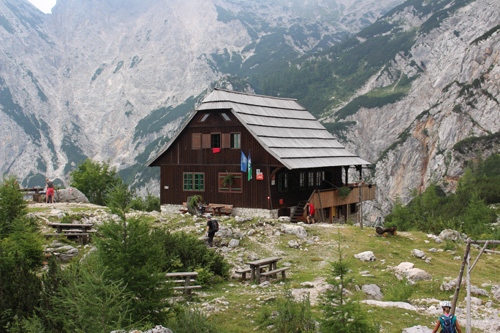
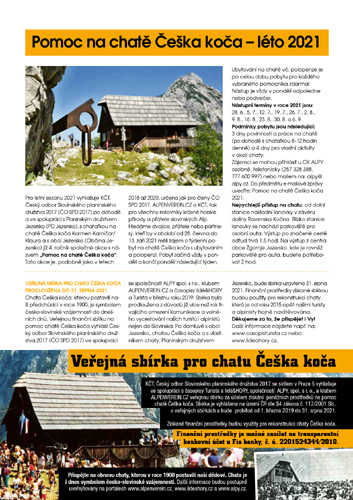
The growing number of mostly day visitors required a kitchen redesign, developed in consultation with an architect. In 2023, a new serving and receiving area was completed on the hut terrace. Accommodation has also been modernised. In 2025, reconstruction of the large dormitory on the first floor began. The extensive works are expected to be completed in 2026.
The year 2025 marks the 125th anniversary of Češka koča!
Češka koča, built by Prague mountaineers in 1900 and now owned and managed by Jezersko Alpine Club, remains a living symbol of Czech-Slovenian friendship, especially in the field of mountaineering.
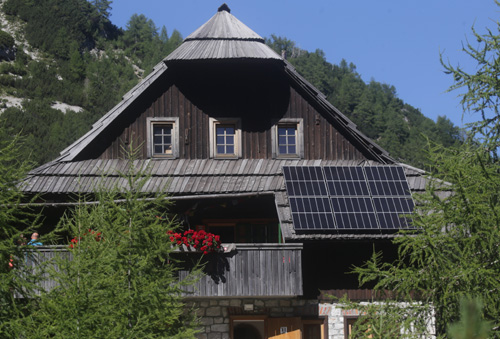

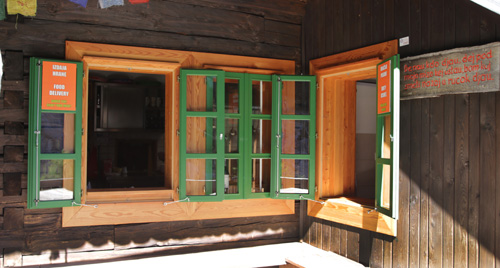
TOP